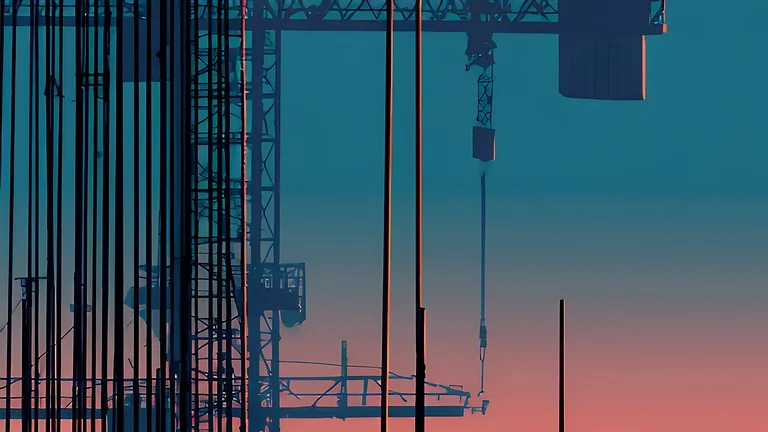
ADTO News
How to Choose the Right Scaffolding for High-Rise Construction
High-rise construction projects present unique challenges that require specialized equipment to ensure safety, efficiency, and structural integrity. Among the most crucial components for these projects is scaffolding. Selecting the right scaffolding system for high-rise buildings is essential for supporting workers, materials, and ensuring smooth project execution. In this guide, we’ll explore the key considerations for choosing scaffolding for high-rise construction, focusing on load capacity, materials, and height requirements.

1. Understanding Load Capacity Requirements
In high-rise construction, scaffolding needs to support significant loads, including workers, tools, and construction materials. Understanding the load-bearing capacity of scaffolding is critical to ensure that the structure is safe and stable.
Key Considerations:
Material Weight: Different scaffolding materials have varying load-bearing capacities. Steel scaffolding typically offers higher strength and is better suited for heavy-duty applications.
Dynamic Load: In high-rise projects, scaffolding not only supports static loads but also dynamic loads, such as workers moving, machinery, and wind forces. Choose scaffolding designed to withstand these forces.
Safety Margins: Always ensure that the scaffolding system exceeds the anticipated load by a sufficient margin to accommodate any unforeseen stresses.
Recommendation: For high-rise buildings, opt for heavy-duty scaffolding systems, often made from steel or a combination of steel and aluminum, to ensure that they can support the high loads encountered during construction.
2. Material Selection: Steel vs. Aluminum
Choosing the right material for scaffolding is crucial in high-rise construction. The two most common materials used are steel and aluminum, each with its own set of advantages.
Steel Scaffolding:
Strength and Durability: Steel scaffolding is robust and can handle significant weight loads, making it ideal for high-rise construction.
Stability: Steel provides excellent stability, which is essential when constructing multi-story buildings.
Long-Term Use: Steel scaffolding is perfect for long-term, large-scale projects, offering high durability even in harsh weather conditions.
Aluminum Scaffolding:
Lightweight: Aluminum scaffolding is much lighter than steel, making it easier to transport and assemble, which can be an advantage in certain applications.
Corrosion Resistance: Aluminum is naturally resistant to corrosion, which is beneficial for high-rise projects that may be exposed to outdoor elements.
Cost-Effective: Although it has a lower load capacity than steel, aluminum scaffolding can be more cost-effective for certain areas of a high-rise project, such as interior scaffolding or temporary access platforms.
Recommendation: For the main structure and areas where heavy loads will be supported, steel scaffolding is the preferred choice. However, for interior work or where lightweight solutions are required, aluminum scaffolding is a good alternative.
3. Height Requirements and Design Flexibility
High-rise projects often involve working at great heights, and scaffolding must be designed to accommodate this. The height of the scaffolding system determines how workers access elevated areas safely and efficiently.
Key Considerations:
Adjustable Systems: Look for scaffolding systems that are adjustable in height, allowing for easy customization as the building rises.
Modular Design: Modular scaffolding systems can be configured in various ways to provide flexible access points at different levels of the building.
Reach: Consider the maximum reach needed for workers to access high levels safely. The scaffolding system should allow workers to reach all areas without unnecessary risks.
Recommendation: Opt for scaffolding systems with adjustable heights, such as modular or suspended scaffolding, which can be adapted as construction progresses. This ensures flexibility and adaptability to the changing needs of the building site.
4. Safety Features for High-Rise Construction
Safety is paramount when selecting scaffolding for high-rise construction. The risks involved at height require scaffolding systems that are designed with safety as a top priority.
Essential Safety Features:
Guardrails and Toe Boards: These are crucial to prevent falls and ensure workers are protected from the edges of the scaffolding.
Secure Platforms: Ensure that the scaffolding platform is secure, stable, and free of any gaps that could cause accidents.
Bracing Systems: Proper bracing ensures the scaffolding remains upright and stable, particularly in high winds or heavy usage.
Inspection Access: Regular inspection of scaffolding systems is essential to ensure safety standards are maintained throughout the project.
Recommendation: Always choose scaffolding systems that meet international safety standards, such as those outlined by OSHA or EN regulations. This ensures your team’s safety and reduces the risk of accidents on site.
5. Ease of Assembly and Disassembly
Efficiency is key in any high-rise construction project, and scaffolding plays a crucial role in maintaining a steady workflow. Scaffolding systems that are easy to assemble and disassemble will reduce downtime and keep the project on schedule.
Key Considerations:
Modular Systems: Modular scaffolding is ideal for high-rise construction, as it allows for quicker assembly and disassembly compared to traditional systems.
Tools and Labor: Choose systems that require minimal tools and labor for setup. This helps reduce overall project costs and speeds up the process.
Storage and Transport: Consider how easy the scaffolding is to transport and store, as this will also impact the efficiency of the construction timeline.
Recommendation: Look for scaffolding systems with pre-engineered components that are designed for quick assembly. These will help reduce labor costs and improve overall project efficiency.
Conclusion
Choosing the right scaffolding for high-rise construction is a multifaceted decision that impacts safety, efficiency, and cost. By carefully considering factors such as load capacity, materials, height requirements, safety features, and assembly ease, you can select the scaffolding system that best suits your project.
For construction managers and project leaders, making the right scaffolding choice is essential for the successful completion of high-rise buildings. If you're looking for high-quality scaffolding solutions for your next high-rise project, contact adtomall. We offer a wide range of scaffolding products designed to meet the demands of high-rise construction while prioritizing safety, durability, and efficiency.


 Live Chat
Live Chat
